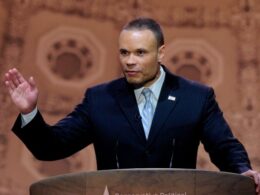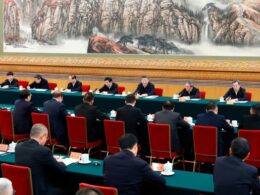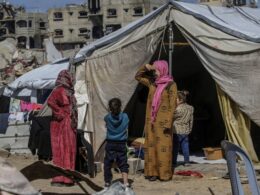Unlock the Editor’s Digest for free
Roula Khalaf, Editor of the FT, selects her favourite stories in this weekly newsletter.
Iran is weaker now than it has been since the Iran-Iraq war of the 1980s. In the so-called Axis of Resistance — the Tehran-sponsored network of regional militias — Hizbollah and Hamas have diminished military and political power. Iran’s closest ally, the Assad regime in Syria, has collapsed. The missile exchanges between Israel and Iran last year ended with Israel establishing its dominance.
The stage is set for a further shake up in 2025. Tehran faces a strategic choice: does it go full speed for nuclear weapons, risking a pre-emptive US-Israeli military strike to destroy its underground nuclear facilities? Or does it seek a new deal with a Donald Trump-led America which would require the regime to recast its approach to regional power?
Given this volatile backdrop, Mohsen Milani’s brilliantly researched book is a timely analysis of how Iran has built up its regional power over the last 70 years. While focusing mainly on the decades since the 1979 revolution, he briefly covers the time when Mohammad Reza Pahlavi reigned as Shah (1941-1979), showing that many of Iran’s alliances straddle both regimes. “In the 1960s [the Shah] helped empower the marginalised Shias as a counterforce against pan-Arabism in Lebanon, while also providing military assistance to anti-Gamal Abdel Nasser loyalists in the North Yemen civil war,” writes Milani.
These were the same communities that the Islamic Republic turned to when it formed Hizbollah in response to Israel’s 1982 invasion of Lebanon, and when it armed the Houthis after the Saudi intervention in Yemen in 2015. Both movements went on to project menacing power beyond their borders.
Milani sets out in detail how the brutal war waged by Iraq through the 1980s served to invigorate the revolution in Iran. Most of the roughly half a million killed in the war were Iranians. But Iran lost no territory and the people rallied around the regime. The conflict led to the rise of the Revolutionary Guard (IRGC) which mobilised Shia militias in Iraq to engage Saddam’s forces in asymmetric warfare — a tactic they went on to use widely in the region.
Milani argues that by the turn of the new century “the Islamic Republic’s regional power had seemingly peaked”. Iraq was emasculated, the relationship with Syria was robust, Hizbollah was becoming a political as well as a military force in Lebanon and ideological ties were being forged with Palestinian militants. It seemed as good as it could get for Tehran.
Two events, 20 years apart, led to Iran’s further rise and then sharp decline this century. The first was the US invasion of Iraq in 2003 which reinvigorated Iran’s influence in the region. America’s rapid military victory deposed Iran’s main enemy, Saddam Hussein, and was followed by a drawn out agony for US forces during which Iran became the major external player in Iraq. For the US: tactical success, strategic failure.
The second decisive event, Hamas’s murderous assault on Israel on October 7 2023, also looks like early tactical success for the perpetrators, followed by a massive reverse for Hamas and its Iranian backers.
Israel is determined never again to allow a hostile militia to exist on its borders and is willing to go beyond the usual rules of war to achieve that goal. The overthrow of Assad’s regime in Syria in December can now be traced to Russia, Hizbollah and Iran each losing the capacity and will to sustain the Syrian regime, the last two as a consequence of October 7.
Hamas’s attack has also put a just settlement to the Palestinian question even further out of reach, perhaps forever. The region’s tables have been turned in Israel’s favour and Iran has paid the strategic price — presumably the exact opposite of what Yahya Sinwar, the architect of Hamas’s assault who was killed in an Israeli strike last October, had intended.
One recurring figure in the book is Qassem Soleimani. Milani describes the head of the IRGC’s extraterritorial forces as the master strategist and network builder who co-ordinated the various parts of the Axis of Resistance. Had he not been killed by a US drone in January 2020, I think he would be the most powerful figure in Iran, shaping the succession to Ayatollah Ali Khamenei, the supreme leader. It seems in hindsight that Soleimani’s death marked the start of the decline in Iranian power, with the militias he marshalled becoming more independent.
My main reservation about Milani’s book is his assumption, expressed in the title, that the defining issue for Iran is a power struggle with America. He writes of Iran’s “geostrategic rivalry with the US” and Iran “entangled in a cold war with the US”. I don‘t think this quite captures it.
The highest priority of Iran’s leaders is to preserve the Islamic regime, despite the lack of consent for it among Iran’s people. As Milani acknowledges, “Today, the Islamic Republic has become increasingly disconnected from the lives of ordinary Iranians. The state is heading in an unsustainable direction”.
In my view, the regime’s belligerent approach in the region, denying Israel’s right to exist, competing with and threatening Saudi Arabia and standing up to American power are means to justify oppression at home as well as trying to dominate their regional rivals. Milani talks of the regime pursuing its regional strategy for ideological reasons, despite it not being in Iran’s national interests. It certainly is not in Iran’s national interest, but it has helped keep the regime in power.
Much has happened since Milani completed his text in mid-2024. But his book is an important contribution to understanding how Iran has pursued its interests over the past 70 years and gives clues on how it might navigate what could be an even more turbulent 2025.
Iran’s Rise and Rivalry with the US in the Middle East by Mohsen M Milani Oneworld £25, 368 pages
John Sawers is former chief of MI6 and UK ambassador to the UN
Join our online book group on Facebook at FT Books Café and follow FT Weekend on Instagram and X









